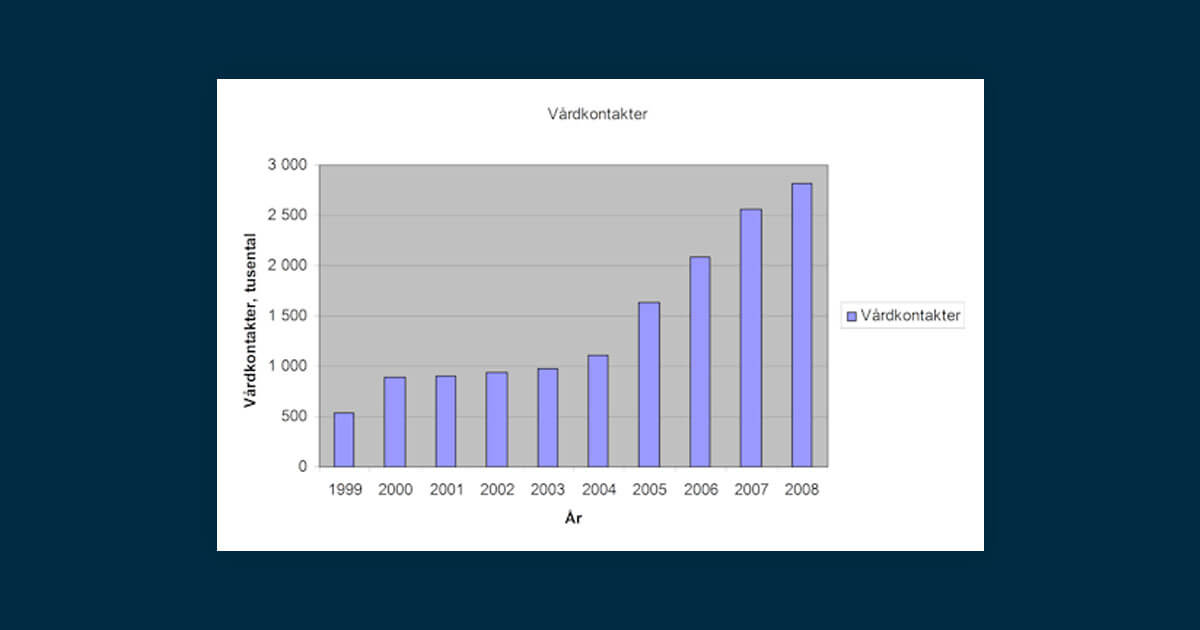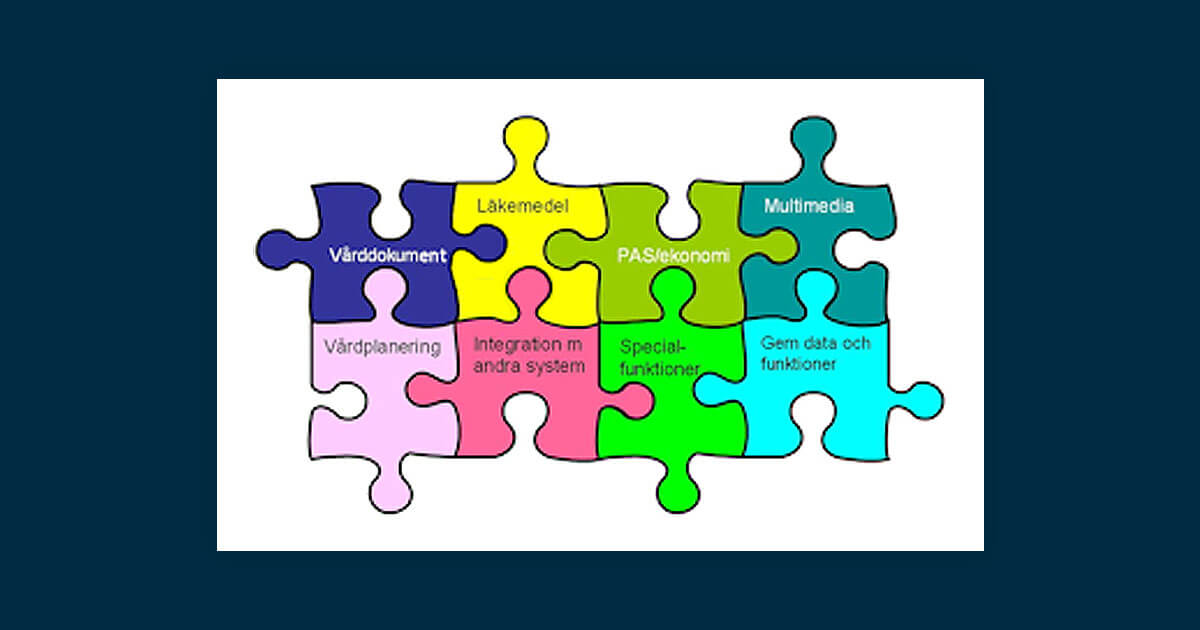Healthcare Management with TakeCare: Dyalog's Success in Integrated Systems
Category: Healthcare
Profdoc Care
Largest System User: Samverkan TakeCare – STC
Samverkan TakeCare (STC) is an organisation that was established by the stakeholders using the TakeCare solution. The participants in STC are:
- Karolinska Universitetssjukhuset (Karolinska University Hospital)
- Stockholms Läns Sjukvårdsområde – SLSO (Stockholm District Healthcare)
- Gotlands Sjukvårdsområde (Gotland’s Healthcare)
- Salem-Nykvarn-Södertälje
All of these are founding members, and each has two representatives on the Board of STC.
STC is the owner of the rights of use for the TakeCare solution within the Stockholm County Council, and STC is further responsible for its operation and maintenance. It is also responsible for co-ordinating future developments of the system with Profdoc Care AB. To facilitate these responsibilities, the parties above have created an operational group with appropriate staff called Centrum Samverkan TakeCare (CSTC). CSTC is responsible for the daily running operation of the system as well as all future developments and expansions.
The Background to TakeCare
For the past few years, TakeCare has provided the indispensable mission critical IT “spine” for Karolinska Universitetssjukhuset and its partners, offering a completely integrated solution catering for most healthcare processes. It is considered by its users to be a solid and stable software solution which provides a trustworthy IT platform for the entire healthcare operation. Furthermore, it received the IT Award 2006 from UserAwards.
The current operational platform for TakeCare AIX was implemented in 2003 and has proven to be extremely scalable and robust. Adding other services or new geographical areas with their attendant healthcare centres is simple, requiring nothing more than server capacity.
The joint database provides access for all involved parties to enter data into the system and maintain patient records whilst retaining full data integrity. This also benefits other areas such as maintenance of the list of prescription medication, the ordering of laboratory tests and the timely delivery of associated test results.
It is a cost effective solution that is highly user-friendly, hence allowing for rapid take-up by users in newly added areas.
The target is to provide sharing of important patient information, provide access to the list of prescription medication, access ordering of laboratory tests and maintain status over all lab test results whilst also interfacing to the National Patient Register for sharing of patient information on a national level. This target is set to be realistic and is on track to be achieved before 2011.
Current Status
Today, TakeCare handles exchange of information across a number of healthcare regions and further facilitates exchange of information between regions or wards. The structure of the database allows for the complete separation of data relating to individual healthcare providers and units. This makes it possible to create new functions that support the requirements for patient data being entered into consistent patient records.
- 23,000 users in 1,152 different units/wards
- 225,000 patient records opened every 24 hours
- Transfers approximately 100,000 ward documents every 24 hours to Intelligence
- TakeCare contains patient records for 1,838,000 citizens (as of 18/09/2008)
- TakeCare handles 6,400 Laboratory orders every 24 hours
- Different laboratory systems are electronically integrated with TakeCare’s ordering and response element.
During the past few years TakeCare has been implemented successfully at a large number of new units. The introduction of the solution at Karolinska Universitetssjukhuset in connection with the merger which took place within the healthcare organisational structure in 2003-2004 is the largest challenge faced to date. The introduction of the PAS (Planning & Finance) module of the solution at St. Erik’s Eye Hospital in 2007 has proved that TakeCare can co-exist and integrate with other solutions. A further example was the introduction of the solution at Södertälje Hospital, where SLSO successfully implemented TakeCare for the Psychology and Geriatric wards in 2007.
A recent initiative now offers TakeCare as a service to new partners. Initially this will benefit public healthcare providers within Stockholm’s Län Landsting (Greater Stockholm Region) but other public and privately-owned institutions will be included.

TakeCare – Detailed Structure
The TakeCare solution can be viewed as an integrated solution consisting of several elements that fit perfectly together.

The development program targets 10 updates per year. The new versions are implemented “on the fly” and the system never has to be taken off-line for an update.
New functionality is first pilot-tested in a strictly monitored environment, prior to being released for general implementation.

Ongoing Development Projects
- Catering for new wards’ requirements – for example, the development of a module for diagnosis which will provide an even better picture of the diagnosis attributed to patients. Another development project is for the establishment of an overview for measurement and test values which will include presentation of all lab replies and measurement/test values in a time-related framework.
- Pharmaceutical module – this module is under a wider implementation within new wards with their associated requirements. The development process will provide a better handling of predefined preferred pharmaceuticals and allow for the ability to order predefined doses of medication as well as increase safety in copying lists of pharmaceuticals.
- Efficiency improvement – in order to cater for a joint patient record system, improved overview and better visual presentation is required. At the same time, a process allowing for supervision of ward processes in relation to individual patients, a traffic signalling system for incoming answers and a multi-disciplinary ordering module will be introduced.
- Intelligence – this development project focuses on facilitating handling of additional document types (initially, the ordering and answers of all analysis). After that new document types will follow according to a prioritised list until such time as all information in TakeCare is available in the intelligence database.
- Integration project – Xchange – which is the real-time access module of TakeCare also caters for real-time access to other systems and services. This will now be enhanced with a “speed display” that will allow for immediate visual verification of work speed – that is, Xchange will be integrated to the pharmacy distribution of medication in specific doses for wards catering for sectioned patients. Further integration to the pre-analysis system (called Safir Prelis) which caters for multi-disciplinary ordering of medication. Integration with the blood transfusion system is further under development. Adaption to the new requirements for e-prescriptions (NEF) have just been completed and are being implemented during Q4 2008.
- Legislation and other legal requirements – work is in progress to support the new legal requirements with regards to patient data, which must allow for matching patient records, direct data and blocking of data as well as an improved data logging facility.
Additionally there are several projects underway for the period 2009-2011, including a portal and several national projects.
Development Methodology and Domain Expert Input
TakeCare is developed using the agile software programming approach. In contrast to traditional large scale software development projects, the agile approach caters for a more flexible software development process with a very large degree of domain expert input from actual users. The Development environment used – Dyalog – allows for very rapid prototyping. Some of the benefits achieved are:
- Project participants create the specification requirements – hence, by including team members who are also users of the system, it is ensured that the operational result is always the best and in accordance with the users’ expectations.
- The collaboration between business-savvy individuals, software programmers and actual users of the system means that users are regarded as “Customer Managers” and, as such, they are considered to be experts on how the system should be used in order to reflect their actual work situation. The input from users is, therefore, invaluable throughout any development process – be it enhancements or adding new modules/services.
- The delivery of new features is fast and frequent. This means that the time from the moment users have raised a requirement for a feature until it is implemented is very short indeed and this facilitates even greater user acceptance of the entire solution.
- Problems are solved using the simplest possible approach – breaking them down into less complex entities. This allows for eliminating risk of errors and increased usability.
- Changes to the requirements are embraced and even welcomed. Instead of starting a project with a fully defined set of requirement specifications, users are invited to provide their feedback throughout the entire development process. It is fully appreciated – and understood – that users can change their mind with regards to something, hence there is no formal demand for consistency in user feedback.
- Communication is predominantly achieved by face-to-face interaction in order to avoid misunderstandings.
The architecture of TakeCare is specifically aimed at the healthcare professionals’ daily work with patients. TakeCare is built with a customised form of two-layered architecture with fat clients (client-server). The clients handle the presentation and some logic and the server handles data and other logic. The TakeCare client is a 32-bit Microsoft Windows program, which is compatible with all versions from Windows 2000 to Windows 7. To reduce the load on the TakeCare server, a large part of the data processing is done on the clients – this also increases responsiveness for the user.
The TakeCare server is platform-independent and can run on a variety of environments, everything from Windows Server to Solaris, AIX and Linux; on Sun Sparc, IBM Power Systems (formerly called RS/6000) or Intel-compatible processors; in 32- or 64-bit mode. This allows the customer to select a platform that fits best into their IT environment.
Case Studies
Examples of real-world applications of Dyalog in different sectors such as automotive, education, healthcare, finance…



